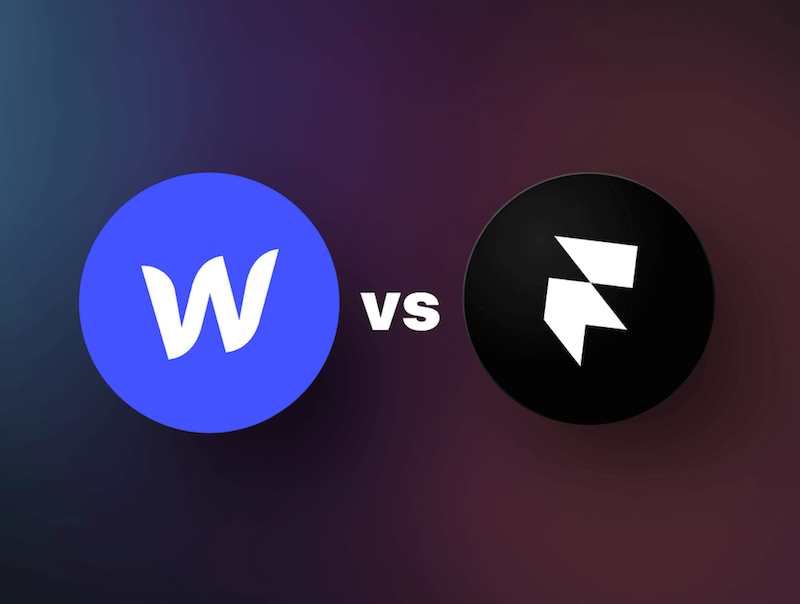code
Webflow vs. Framer: A Comprehensive Comparison

Introduction:
Webflow and Framer are two popular tools used in web and UI/UX design, each offering unique features and capabilities. In this comparison, we'll explore the key aspects of both platforms to help you make an informed decision based on your specific needs.
1. Ease of Use:
- Webflow: Known for its intuitive visual interface, Webflow allows designers to create responsive websites without coding. Its drag-and-drop functionality and pre-built components make it beginner-friendly.
- Framer: Framer is more geared towards experienced designers and developers. While it offers a visual interface, it also requires knowledge of JavaScript and React to take full advantage of its capabilities.
2. Design and Prototyping:
- Webflow: With Webflow, you can design visually stunning websites using a wide range of customizable templates and elements. It provides extensive design control, making it an excellent choice for creating polished web designs. However, its prototyping capabilities are more limited.
- Framer: Framer shines when it comes to high-fidelity prototyping and interaction design. It offers advanced animation and interaction tools, allowing designers to create intricate and interactive prototypes with micro-interactions and complex transitions.
3. Development Flexibility:
- Webflow: While Webflow eliminates the need for coding in most cases, it still provides the flexibility to add custom code when necessary. It offers integration with popular third-party services and has a robust CMS functionality.
- Framer: Framer is highly flexible for developers, as it allows direct manipulation of code and provides access to React components. This makes it a preferred choice for those who want to leverage their coding skills to create custom designs and interactions.
4. Collaboration and Teamwork:
- Webflow: Webflow offers built-in collaboration features, allowing multiple team members to work on a project simultaneously. It also provides a staging environment for previewing and sharing designs with clients or stakeholders.
- Framer: Framer offers collaboration features through Framer Cloud, allowing team members to share and collaborate on projects. However, the collaboration capabilities are not as extensive as those in Webflow.
5. Pricing:
- Webflow: Webflow offers tiered pricing plans, including a free plan with limited features and paid plans that unlock additional functionalities and hosting options. The pricing is suitable for both individuals and teams.s
- Framer: Framer has a subscription-based pricing model, with different plans for individuals and teams. The cost is higher compared to Webflow, making it more suitable for professional designers and larger teams.
Conclusion:
In summary, Webflow and Framer serve different purposes in the design and development space. If you prioritize a user-friendly visual interface and powerful web design capabilities, Webflow is an excellent choice. On the other hand, if you're looking for advanced prototyping and interaction design with a focus on code-based flexibility, Framer may be the better option. Consider your specific requirements, skillset, and project goals to determine which tool aligns best with your needs.
UP
